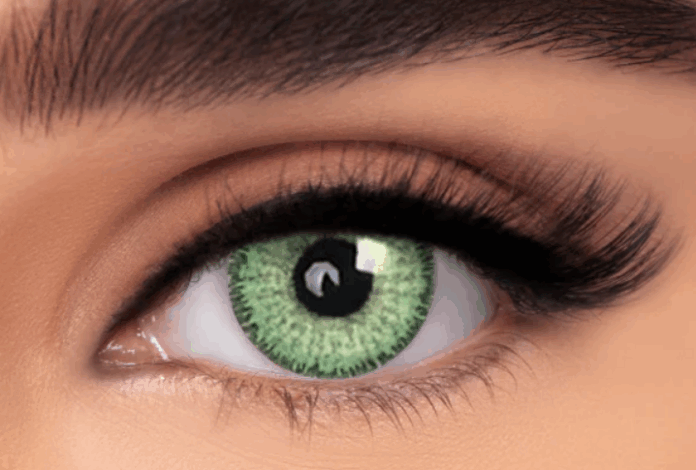For many years, permanently changing your eye color seemed like a science-fiction idea. Today, however, thousands of people are seriously considering it, whether for aesthetic reasons, personal expression, or to achieve the appearance they have imagined for years. As interest grows, people naturally ask many questions. Is it safe? How does it work? How long does it last? Is it painful? How much does it cost? This article answers the main questions people have before deciding whether eye color change is right for them thanks to the help of the most complete eye color change guide.
Why do people want to change their eye color?

Motivations vary from one person to another. Some people want subtle and natural enhancement; others want a brighter or lighter appearance; many simply want their eye color to better match the way they feel. Contact lenses can imitate different colors, but they are temporary, uncomfortable for many, and cannot reproduce the natural depth of real irises. That is why permanent solutions have become increasingly interesting.
What are the methods available today?
There are three known methods, but only one is widely considered safe when performed correctly.
1. Keratopigmentation

This is the leading technique today. A femtosecond laser creates a micro-tunnel inside the cornea, where medical pigments are inserted. The iris itself is not touched or removed. The procedure is short, minimally invasive, and associated with a low complication rate when performed with certified pigments and a regulated protocol.
2. Laser depigmentation
This technique tries to lighten brown eyes by reducing melanin cells with laser energy. Results are often unpredictable, usually require multiple sessions, and do not reliably create blue or green eyes. Long-term stability and safety remain uncertain.
3. Iris implants
A colored silicone implant is inserted inside the eye. This method is considered unsafe due to significant risks, including glaucoma, inflammation, cataract, and even vision loss. Most ophthalmologists around the world warn strongly against it.
Among these methods, keratopigmentation is currently the only one recognized for offering long-lasting results with a favorable safety profile when done correctly.
How does keratopigmentation work?
The technology is advanced, but the patient experience is simple.
Before the procedure, the surgeon reviews your medical history, your corneal thickness, your eye photos, and your overall eye health. A color simulation helps you choose your future shade. Many patients travel to another country, so travel and appointment planning may be part of the process.
On the day of the procedure, anesthetic drops are applied. A femtosecond laser creates a precise micro-channel at a controlled depth in the cornea. Pigments are inserted carefully into this space. The laser time itself usually takes between 4 and 7 minutes per eye. Most patients leave the clinic shortly afterward.
After the procedure, there is a short check-up to verify that everything is stable. Most people rest for the day and can return to work the next day. Eye drops may be needed for a few days.
Is eye color change safe?

Safety is the most important question for anyone considering this procedure. Keratopigmentation can be safe, but only under specific conditions.
It is considered safe when performed by a surgeon experienced in keratopigmentation, when the clinic uses approved pigments, when a modern femtosecond laser is used, and when the patient is properly evaluated before the surgery. Follow-up after the procedure also matters.
Minor and temporary effects may include light sensitivity, mild dryness, or a slight sensation of irritation. These usually disappear quickly. As with any surgical procedure, risks exist, such as inflammation, corneal issues, or pigment irregularities. These complications are uncommon in certified clinics but must still be discussed clearly.
One of the most common fears is the possibility of blindness. Based on current evidence, when keratopigmentation is performed correctly using regulated techniques, there are no documented cases of blindness caused directly by the procedure. The risk becomes significant only when the procedure is done in unregulated or inexperienced environments.
Does the result look natural?
Modern pigments are designed to imitate the natural pattern of real irises. The final appearance depends on your original eye color, the shade selected, the distribution of pigments, and lighting conditions. Some patients prefer a soft and natural change, while others choose a brighter or more striking result. A good surgeon will guide you toward the option that suits your face and expectations.
Is the result permanent?
Keratopigmentation is considered permanent because the pigments remain inside the cornea. In rare cases, a touch-up may be suggested to adjust symmetry or increase intensity. Reversibility is limited, so the decision requires careful consideration.
Is the procedure painful and what is the recovery time?

Most patients say the procedure is not painful thanks to anesthetic drops. You may feel some pressure during the laser step. After surgery, light sensitivity and dryness can appear for a short time. Many people return to normal activities the next day, although sports and intense physical activity may require a few more days.
How much does keratopigmentation cost?
Costs vary depending on the country, the surgeon’s experience, the clinic’s technology, and what is included in the package. Prices tend to be similar across countries that use certified lasers and approved pigments. Some clinics include pre-operative exams, medications, and post-operative visits, while others do not. It is important to compare realistic quotes and avoid extremely low prices, which are often linked to non-approved methods.
How to choose the right clinic?
Choosing a safe clinic is one of the most important steps. The surgeon should be an ophthalmologist trained specifically in keratopigmentation, the pigments must be medically approved, and the clinic should be transparent about results, risks, and expectations. Before and after photos should be authentic. A proper medical evaluation should be required before confirming the surgery.
Conclusion
Changing your eye color permanently is a serious but exciting decision. Keratopigmentation, when practiced under strict medical standards, offers a modern and generally safe option for those who want long-lasting results. Understanding how it works, what results to expect, and how to choose a qualified clinic is essential. With the right information and the right specialist, eye color change can be done safely and with a natural appearance that reflects who you truly want to be.







